Japanese Women
Japanese Women playing cards in an idealised and erotic style by Keiichi Takasawa (1914-1984).
Japanese Women in idealised and quasi-erotic style by Keiichi Takasawa (1914-1984) on playing cards manufactured by Angel Playing Cards Co Ltd, Japan. The ladies are in demure poses and a few are not quite fully dressed. Most of the images appear to depict the same model.
Above: Japanese playing cards with erotic artwork by Keiichi Takasawa (1914-1984), manufactured by Angel Playing Cards Co Ltd, Japan. 52 cards plus 3 jokers. The extra card appears to give the main dates from the artist's biography in Japanese script.
Keiichi Takasawa was born in Gunma Prefecture in 1914. In 1936 he attended Nihon University and later studied with Tsuguharu Fujita (a strong influence). During the war Keiichi worked as a war reporter. He did many illustrations and covers for women’s magazines, music record covers, etc. He also produced many ‘nikushitsu’ paintings of ‘bijin-ga’ (beautiful women) and the best of these were often published as woodblock prints. His bijin-ga prints always depicted the same slender-necked beauty (who may have been his wife), often in erotic poses. He usually signed his name using both Japanese kanji and Roman script, and this can be seen on the back of the cards.
By Rex Pitts (1940-2021)
United Kingdom • Member since January 30, 2009
Rex's main interest was in card games, because, he said, they were cheap and easy to get hold of in his early days of collecting. He is well known for his extensive knowledge of Pepys games and his book is on the bookshelves of many.
His other interest was non-standard playing cards. He also had collections of sheet music, music CDs, models of London buses, London Transport timetables and maps and other objects that intrigued him.
Rex had a chequered career at school. He was expelled twice, on one occasion for smoking! Despite this he trained as a radio engineer and worked for the BBC in the World Service.
Later he moved into sales and worked for a firm that made all kinds of packaging, a job he enjoyed until his retirement. He became an expert on boxes and would always investigate those that held his cards. He could always recognize a box made for Pepys, which were the same as those of Alf Cooke’s Universal Playing Card Company, who printed the card games. This interest changed into an ability to make and mend boxes, which he did with great dexterity. He loved this kind of handicraft work.
His dexterity of hand and eye soon led to his making card games of his own design. He spent hours and hours carefully cutting them out and colouring them by hand.

Leave a Reply
Your Name
Just nowRelated Articles

Sunday Night / Nichiyoubi no Yoru
An irreverent, avant-garde deck unofficially titled "Nichiyoubi no Yoru" (Sunday Night), designed by...
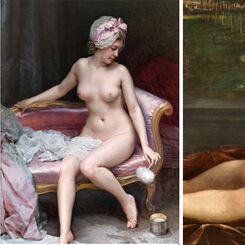
The Art of Pin-Up decks
Feminine beauty has been appreciated since prehistory.
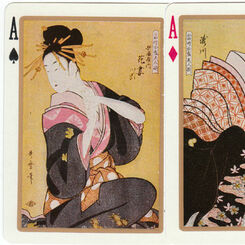
Sanyo Ukiyo-E
Ukiyo-E deck for Sanyo Enterprise Co.
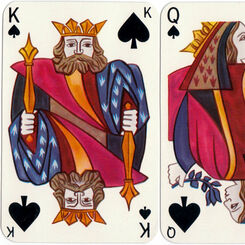
Classique
“Classique” by Draeger Frères, Paris, c.1949 with designs reminiscent of early French cards.
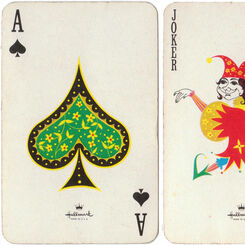
Trump 777
Trump 777 decorative playing cards by Hallmark.
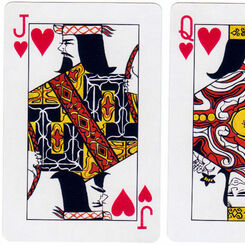
Ainu culture
A terrific deck of cards made by Nintendo c.1979 with original designs on every card showing the Ain...
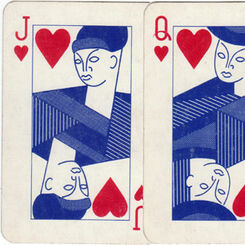
Blue Playing Cards
“Blue Playing Cards” by Piatnik, 1960s, inspired by the Cubism art movement in which objects are ana...
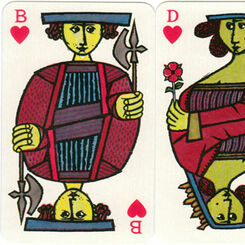
Öbergs ‘Comedia’
Öbergs “Comedia” playing cards designed by Stig Lindberg from Sweden, c.1958
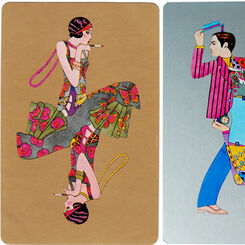
Roaring Twenties
Roaring Twenties playing cards by Angel Playing Cards Co Ltd, Japan. 1980.
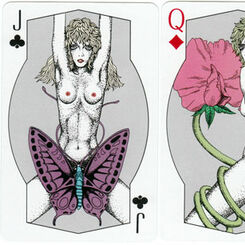
Shapely
“Shapely” non-standard adult playing cards manufactured by Angel Playing Cards Co., Japan, 1980
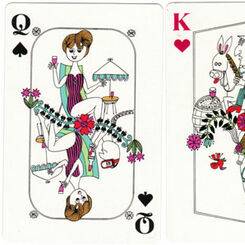
Akadama Honey Wine by Nintendo
Suntory Akadama Honey Wine playing cards manufactured by Nintendo, Japan, c.1970.

Utamaro “Ukiyo-e” playing cards
Utamaro Ukiyo-e playing cards showing woodblock prints of beautiful women.
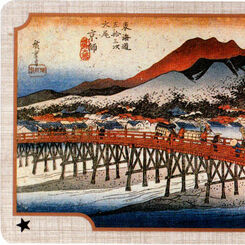
Hiroshige Ukiyo-e playing cards
“Hiroshige” playing cards drawn by Hiroshige Ando (1797-1858) at 53 stopoffs on the journey from Edo...
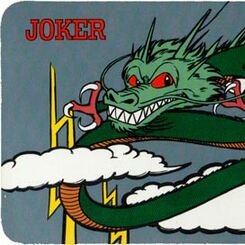
Dragon Fanning Deck
This set of cards published by DP Group Ltd (Japan) allows the performer to create different fans
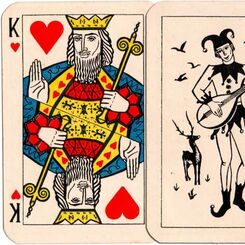
Anonymous Dutch deck, 1940s
Anonymous Dutch deck, 1940s
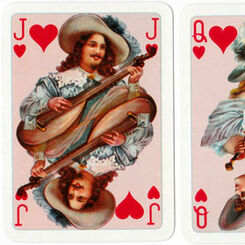
Club Bridge
Modiano’s ‘Club Bridge’ is a new edition of a stylish deck originally published in c.1895.
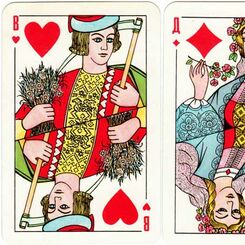
Russian Four Seasons
“Seasons” playing cards designed by U. P. Ivanov and published by The Colour Printing Plant in St Pe...
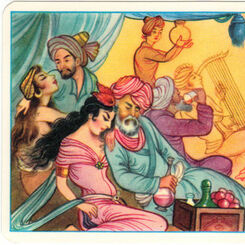
Hafez Fortune Telling Cards
Fortune Tellers use the Hafez Cards by interpreting the Hāfez poems printed on the card backs when c...

Première Croisade
Deck evoking the ‘Première Croisade’ with single-ended courts by Daveluy, Bruges, c.1850.
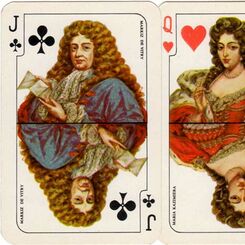
Relief of Vienna
“Relief of Vienna” tri-centenary pack, 1983
Most Popular
Our top articles from the past 60 days


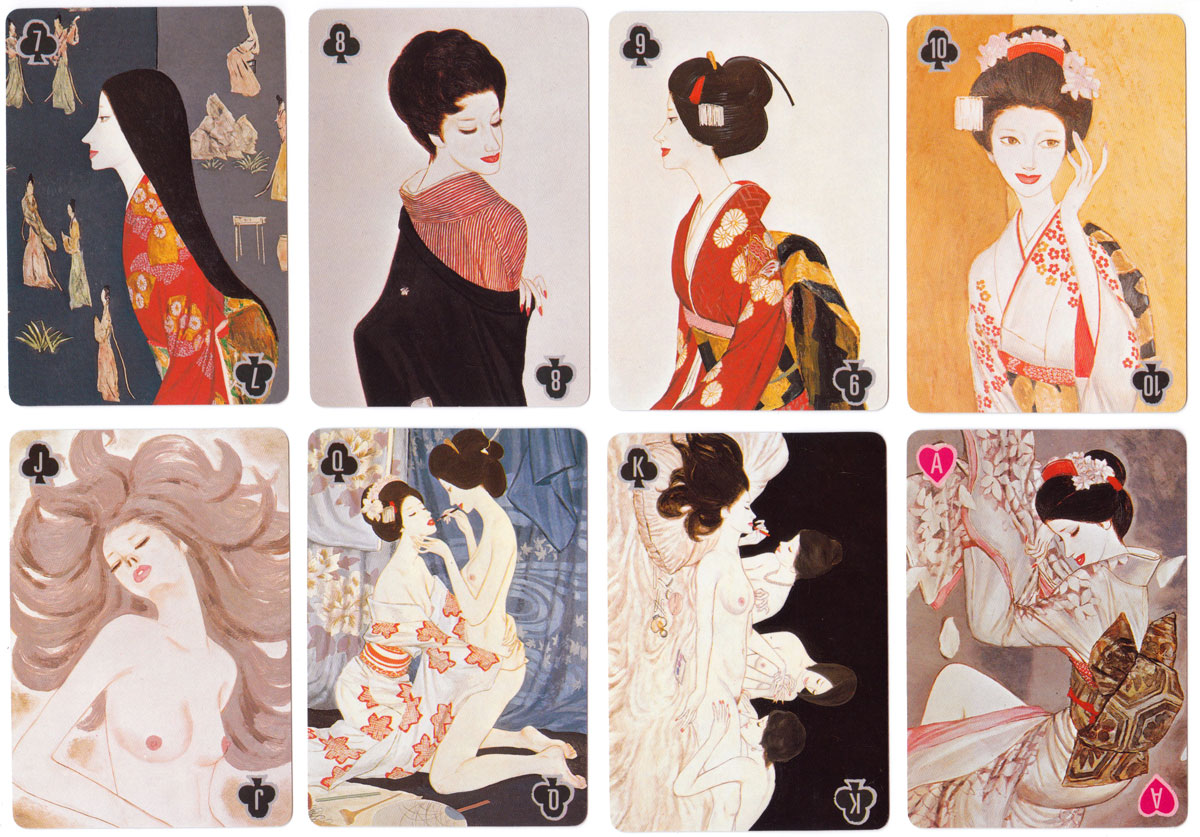

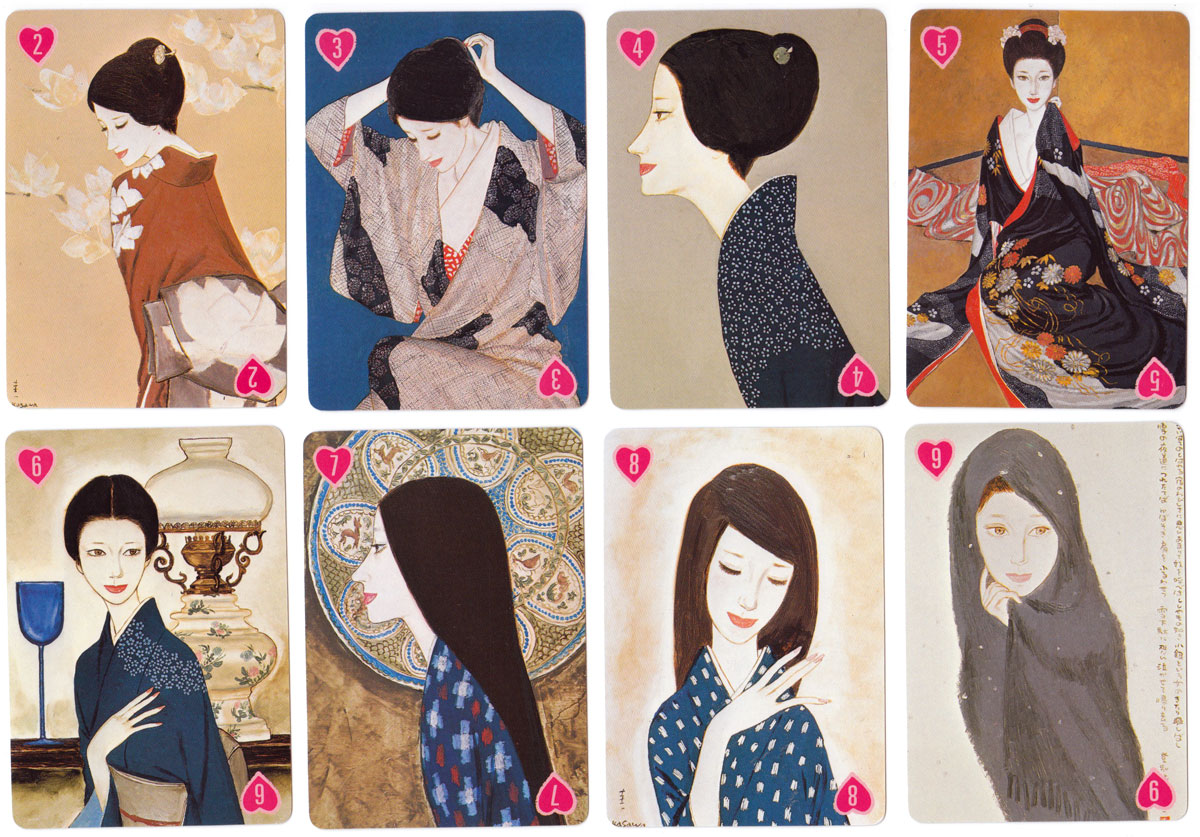

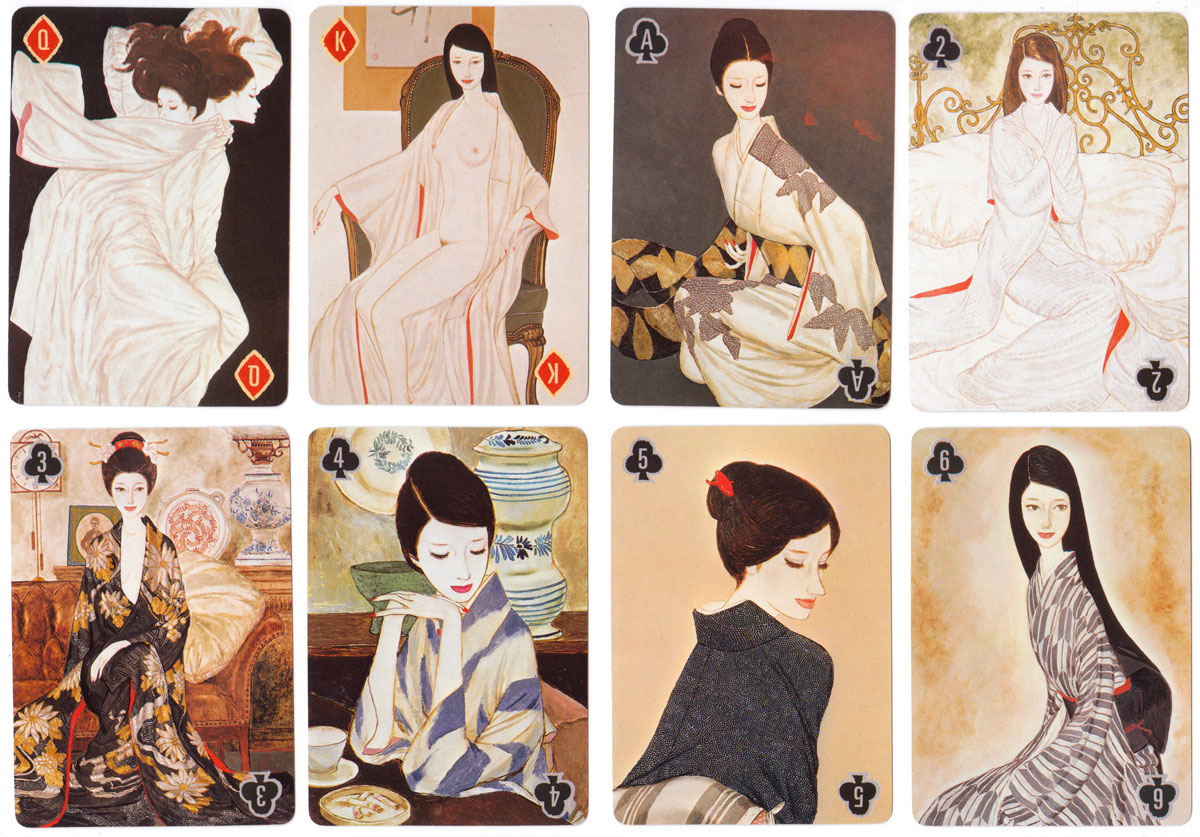
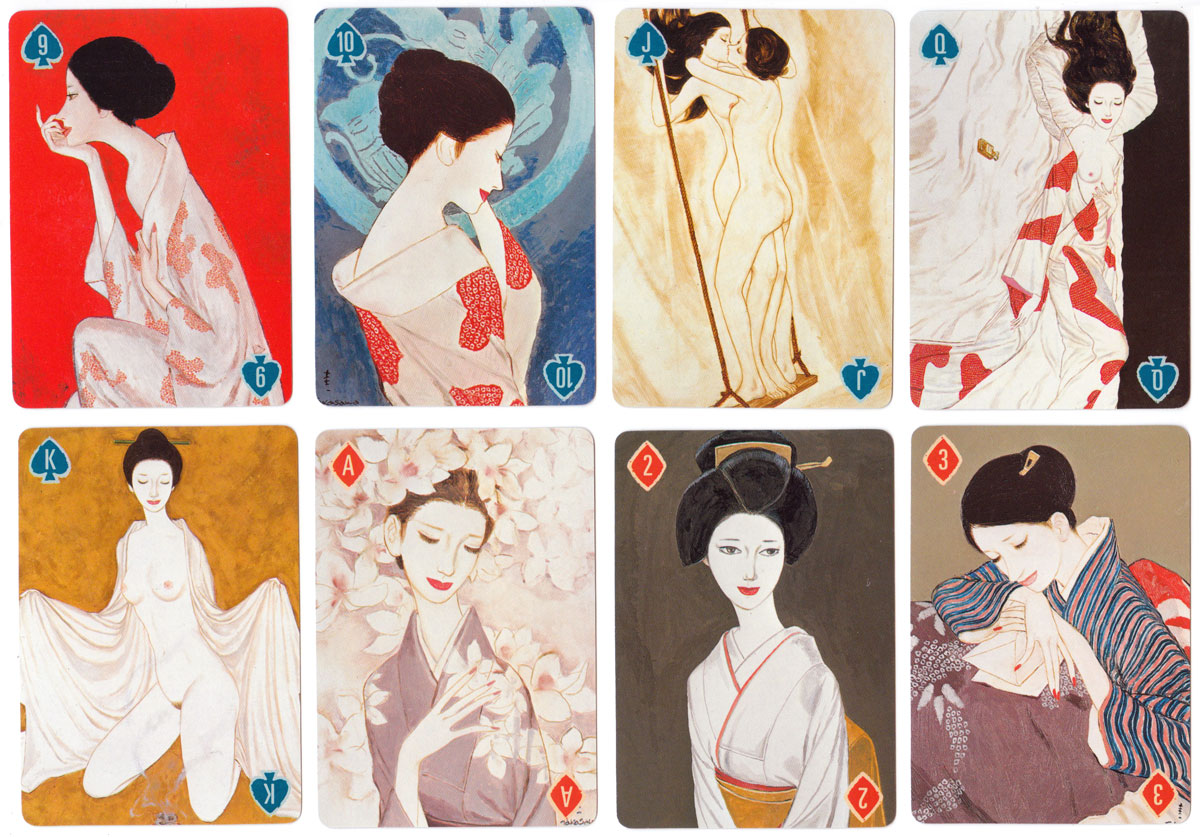
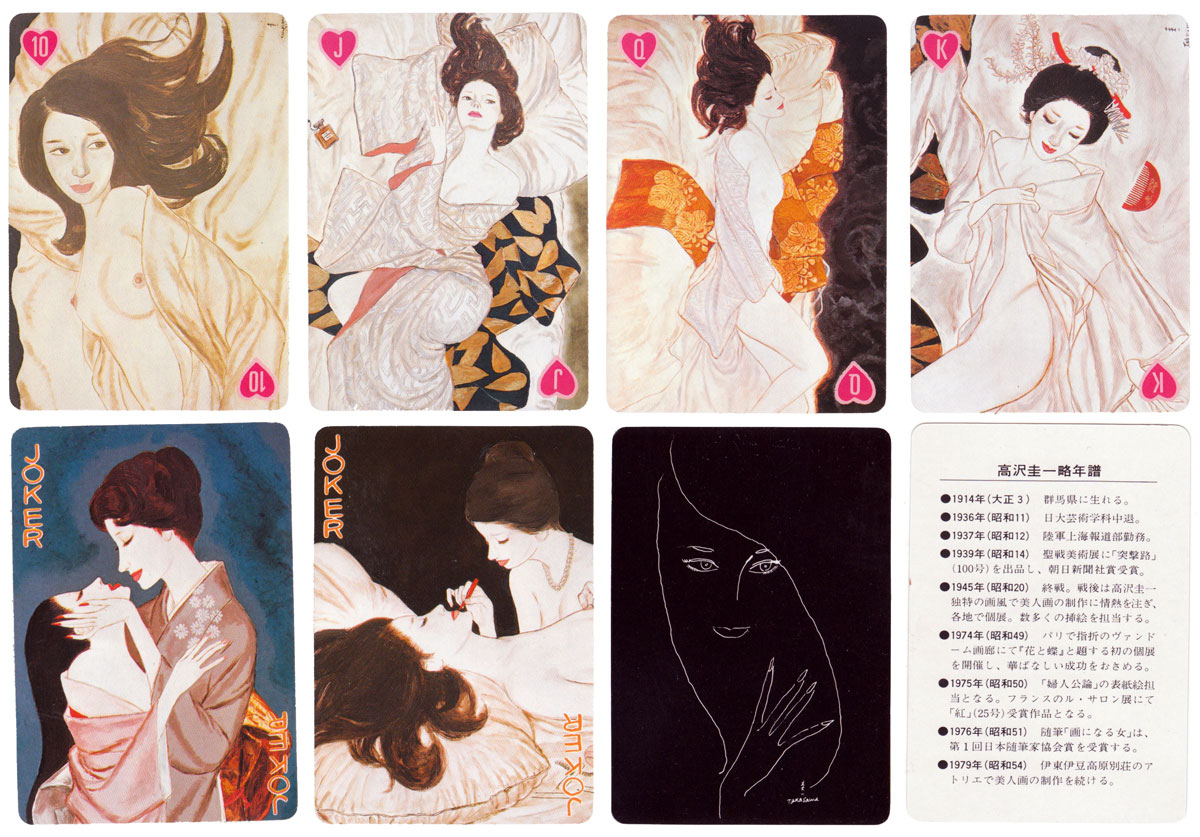
 Your comment here. Your comment here. Your comment here. Your comment here. Your comment here. Your comment here. Your comment here. Your comment here. Your comment here. Your comment here. Your comment here. Your comment here. Your comment here. Your comment here. Your comment here. Your comment here. Your comment here. Your comment here. Your comment here. Your comment here. Your comment here. Your comment here. Your comment here. Your comment here. Your comment here. Your comment here. Your comment here. Your comment here. Your comment here. Your comment here. Your comment here. Your comment here.
Your comment here. Your comment here. Your comment here. Your comment here. Your comment here. Your comment here. Your comment here. Your comment here. Your comment here. Your comment here. Your comment here. Your comment here. Your comment here. Your comment here. Your comment here. Your comment here. Your comment here. Your comment here. Your comment here. Your comment here. Your comment here. Your comment here. Your comment here. Your comment here. Your comment here. Your comment here. Your comment here. Your comment here. Your comment here. Your comment here. Your comment here. Your comment here.




















